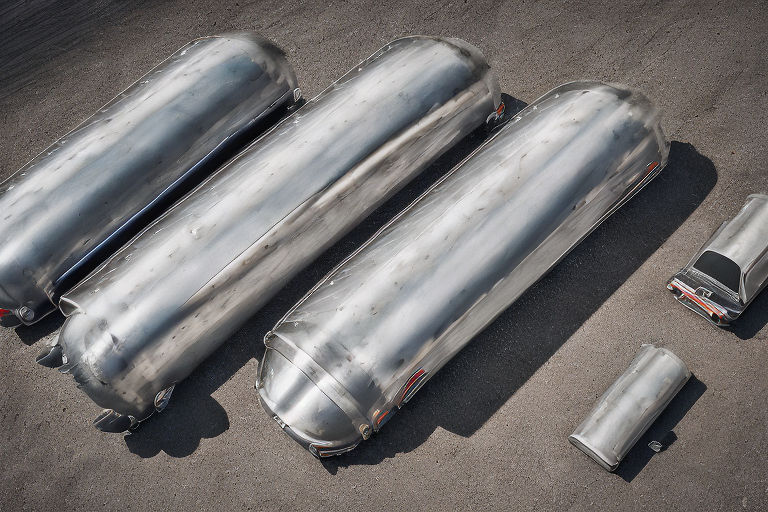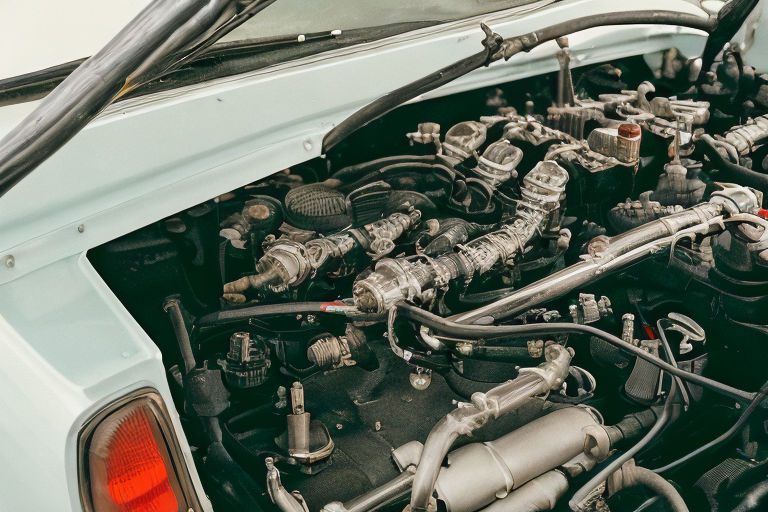
Introduction

Sprint cars and trucks are high-performance vehicles that require efficient cooling systems to maintain optimal performance. A critical component of these cooling systems is the heat exchanger, which plays a vital role in dissipating the heat generated by the engine. In this article, we will explore the benefits of using sprint car and truck heat exchangers and how they improve the performance and durability of these vehicles.
What Is a Heat Exchanger?

A heat exchanger is a device that transfers heat from one fluid to another without coming into direct contact with either fluid. In a sprint car or truck, the heat exchanger is typically used to remove heat from the engine coolant, transmission fluid, or power steering fluid. The most common type of heat exchanger used in sprint cars and trucks is the plate-fin heat exchanger, which consists of multiple layers of plates and fins that increase the surface area for better heat transfer.
Benefits of Sprint Car and Truck Heat Exchangers

There are several advantages to using heat exchangers in sprint cars and trucks. Let’s take a closer look at them:
Improved Engine Performance
Heat is one of the biggest enemies of engine performance. When an engine overheats, it can cause significant damage, leading to reduced power output and decreased engine life. A properly functioning heat exchanger helps prevent overheating by removing heat from the engine coolant, allowing the engine to run cooler and more efficiently. This results in improved performance and longer engine life.
Increased Durability
Sprint cars and trucks operate under extreme conditions, which can cause excessive wear and tear on engine components. Heat exchangers help reduce the thermal stress on these components by maintaining proper operating temperatures. This results in increased durability and longevity, reducing the need for costly repairs and replacements.
Better Fuel Efficiency
When an engine runs at a higher temperature, it consumes more fuel to produce the same amount of power. By using a heat exchanger to maintain proper operating temperatures, sprint cars and trucks can achieve better fuel efficiency, reducing fuel consumption and saving money on gas.
Improved Transmission Performance
Transmissions also generate a significant amount of heat during operation, which can lead to reduced performance and durability. A properly functioning heat exchanger helps remove heat from the transmission fluid, improving shifting performance and increasing transmission life.
Enhanced Steering System Performance
Power steering systems also benefit from the use of heat exchangers. These systems generate heat during operation, which can cause fluid breakdown and reduce performance. A heat exchanger removes heat from the power steering fluid, resulting in improved steering performance and longer system life.
Choosing the Right Heat Exchanger
When choosing a heat exchanger for your sprint car or truck, there are several factors to consider, including:
- Type of heat exchanger (plate-fin, tube-and-fin, etc.)
- Size and weight
- Flow rate
- Material
- Mounting options
It is important to choose a heat exchanger that is specifically designed for your vehicle’s cooling system and meets the demands of your driving style.
Conclusion
Heat exchangers play a critical role in maintaining optimal performance and durability in sprint cars and trucks. By removing excess heat from engine components, transmissions, and power steering systems, heat exchangers help improve engine performance, increase durability, and enhance fuel efficiency. When choosing a heat exchanger, it is essential to consider factors such as size, flow rate, and material to ensure that you get the best possible performance and longevity from your cooling system.
FAQs
- What is a heat exchanger, and how does it work? A heat exchanger is a device used to transfer heat from one fluid to another without direct contact. It works by circulating a fluid, such as engine coolant, through a series of plates or tubes that increase the surface area for better heat transfer.
- Why do sprint cars and trucks need heat exchangers? Sprint cars and trucks operate under extreme conditions that generate a significant amount of heat. Heat exchangers help remove excess heat from critical engine components, transmissions, and power steering systems to prevent damage and improve performance.
- What type of heat exchanger is best for my vehicle? The type of heat exchanger that is best for your vehicle depends on several factors, including your vehicle’s cooling system, driving style, and specific needs. Plate-fin heat exchangers are commonly used in sprint cars and trucks due to their efficiency and compact design.
- How do I choose the right size heat exchanger for my vehicle? Choosing the right size heat exchanger depends on several factors, including your vehicle’s horsepower, cooling system capacity, and operating conditions. It is important to consult with a qualified technician or heat exchanger manufacturer to ensure that you select the right size for your vehicle.
- Can I install a heat exchanger myself, or do I need professional help? Installing a heat exchanger can be a complex process that requires specialized knowledge and expertise. It is recommended that you seek professional help from a qualified technician to ensure that the heat exchanger is installed correctly and operates effectively. Attempting to install a heat exchanger yourself could result in damage to your vehicle’s cooling system, reduced performance, or even engine failure.



